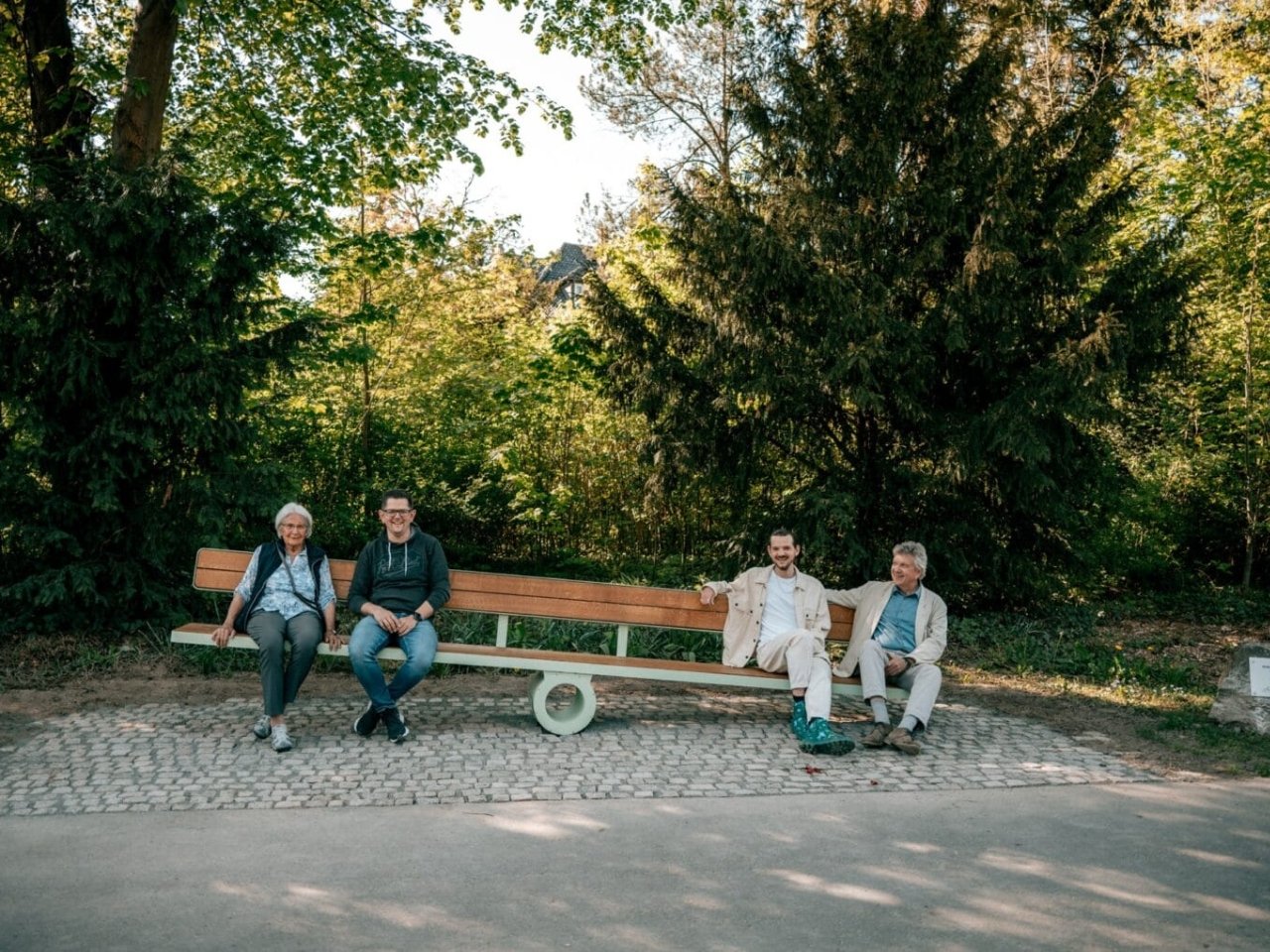Sitting on public benches can sometimes be a tricky situation, depending on what kind of person you are. If you’re naturally an extrovert, you probably wouldn’t mind sharing a bench with a stranger and might even strike up a conversation with that other person. If you’re not that comfortable with social interactions with strangers, you will probably choose to sit somewhere unoccupied by another person. But what if the bench was built to challenge not just how we sit but also how we interact with other people?
In the heart of Einbeck, Germany, a unique public installation is redefining the concept of communal seating. Berlin-based artist Martin Binder’s latest creation, the “Balance Bench,” is more than just a place to rest—it’s a compelling exploration of cooperation, communication, and shared space. At first glance, the Balance Bench appears to be a minimalist piece of furniture, constructed from oak slats atop a sleek, powder-coated steel frame. However, its design deviates from traditional benches by resting on a single central cylinder instead of four legs.
Designer: Martin Binder
This unique structure means the bench cannot be used alone; it requires at least two people to sit on opposite ends to achieve balance. If one person attempts to sit alone, the bench tips, making it unusable without mutual effort. Well, yes you can still probably use it but you would have to find the balance yourself or be watched by other people as you try to sit on it properly.
The bench’s mechanics compel users to engage with one another, fostering a sense of community and shared responsibility. Originally intended for a public art festival in 2021, the project was delayed due to the pandemic’s restrictions. Now, four years later, the installation serves as a poignant reflection on how the pandemic has altered our interactions in public spaces.
Situated in the Garden of Generations in Einbeck, the Balance Bench invites park-goers to engage in a shared experience. Its design challenges individuals to communicate and adjust their positions to achieve balance, transforming a simple act of sitting into an interactive social exercise. The bench accommodates up to eight people along its 4.5-meter length, making it a focal point for community interaction.
Binder’s installation not only provides a functional seating option but also serves as a catalyst for conversation and connection. By integrating principles of cooperation and mutual awareness into its design, the Balance Bench exemplifies how public art can foster community engagement and reflect societal values.
The post Communal bench is also a kinetic installation to foster interaction first appeared on Yanko Design.

